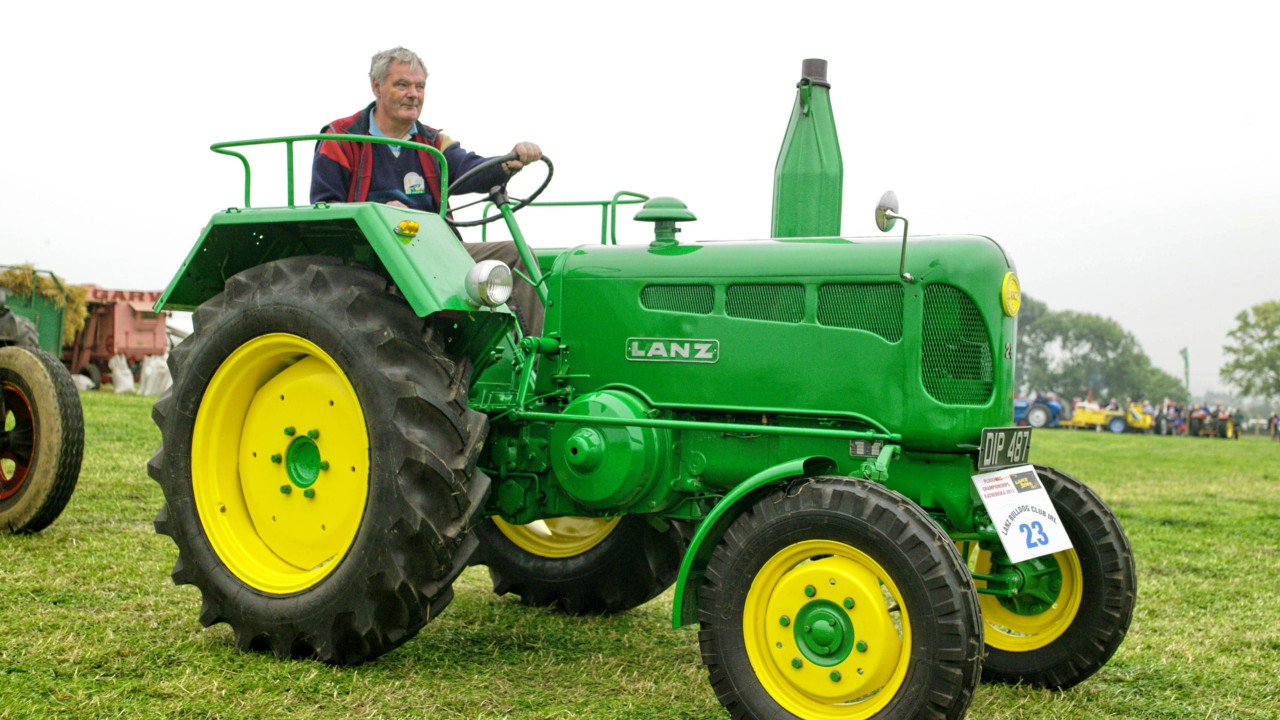Waterloo Boy
Up until 1918 the company was purely a manufacturer of implements, and its entry into tractor production came with the purchase of the Waterloo Boy Gasoline Engine Company in that year, although it had already experimented with its own design beforehand.

Scotland calling
One debate that had been going on within the company was expansion abroad. At the start of the 1950s, a project to build a plant in Scotland for the manufacture of combines and mowers, had reached an advanced state before circumstances closed it down.The company had reached an agreement with the UK government in which the British would build the factory with public money and then lease it back to John Deere for the production of combine harvesters and mowers.
Unfortunately, the plan fell through, mainly due to a Conservative government displacing the Labour administration in 1951. Although the project was never officially cancelled, John Deere was told that the funds for construction would not be released. Internally, the idea had also met resistance from the export department which had lobbied instead for a factory in France, producing a much wider range of machines, including a tractor of 25-30hp.Proposed merger with Massey Harris Ferguson
The attention of the board was then drawn away by other ventures, especially the idea of fertiliser production, and so the idea of foreign expansion took a back seat until Hewitt took over. One of the first items that landed on the desk of the new chairman was an approach by James Duncan, the president of the newly formed Massey Harris Ferguson company, to consider a merger between the two companies.
Added to this mix was the upset caused in the Ferguson camp by Harry Ferguson deciding to sell up without telling anyone beforehand, a shock that many had yet to come to terms with.
It is likely that Duncan saw a merger with what was still an indigenous and rather conservative home market-orientated company, as a way of increasing the sale of his products in the United States. John Deere itself took the idea seriously and invested time and effort in meetings with its rival in a bid to thrash out a plan that was acceptable to both parties.Caterpillar decimates dealer network
Although at first sight the plan seemed to commend itself, the deeper both sides delved into the details, the less attractive the scheme became. One attraction for John Deere was the extent of the MHF agency network in the west, an area which had seen a large reduction in the number of Deere outlets due to a pre-war agreement with Caterpillar to share dealerships. This is a story in itself, but the upshot was that many smaller Californian JD dealers had been forced to switch to other brands, while Caterpillar dealers focused on the post-war building boom, rather than worry about selling a few tractors to farmers.
The need for a new plan
And so the management of John Deere once again found itself without any firm plans for exporting the company's products in any great quantity. Yet Hewitt had not forgotten this intention and it wasn't long before another opportunity presented itself.In late 1953 the company had been quietly approached by a west German banker who held 30% of the Lanz stock.
Lanz had been one of the two dominant German tractor manufacturers up until the war, Deutz being the other, but the company was suffering from a multitude of problems.
John Deere now faced a dilemma. There were two basic ways forward, either build a fresh factory, as had been proposed for Scotland, or buy an established manufacturer and use it as a base to expand upon.
In the end they avoided making that decision and the proposal was voted down in December of the same year, as was another to expand into South America.John Deere succeeds at second attempt
Despite this setback, the germ of the idea had been planted and it surfaced again in 1956 when a second, much more potent group of executives, including William Hewitt, visited Germany to take another look. In the intervening years, Lanz had spent a good deal of money on new machine tools, although the tractors remained the same. This certainly increased the value of the company, and despite many imponderables, a deal was struck for a majority shareholding for $5.3 million.
And so John Deere established itself as an international manufacturer of tractors and farm equipment.
It was not an easy transition; there existed a huge culture clash between the American idea of enterprise and the the European idea of cooperation, and even tractor use. Yet the company stayed the course and Mannheim went on to become the hub of operations and manufacture for Europe and beyond.
